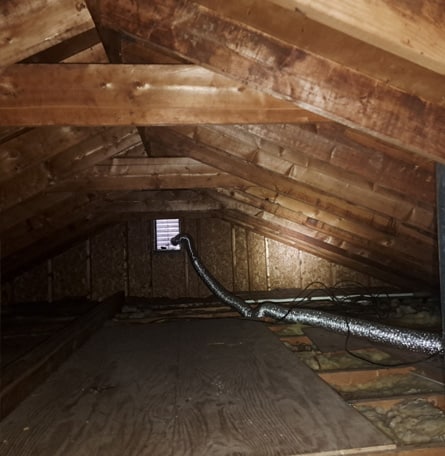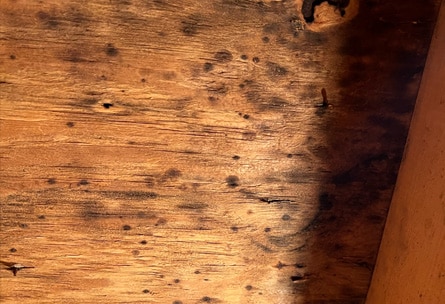Yelp API Error: The access token provided is not currently able to query this endpoint.
Professional Mold Testing Services in The Greater Boston Area Since 2007
Mold testing is the process of sampling and analyzing indoor air or surface samples to detect the presence of mold and identify the type of mold species present. Mold testing is important to identify the presence of mold in indoor environments, which can cause health problems and structural damage. Mold testing can also help to determine the extent of the mold growth and the type of mold species present, which is important for effective mold remediation.
If you suspect that your home or office has been affected by mold, it’s important to get an accurate report on its presence from professionals like Aspen Environmental. This way, you can take the necessary steps to prevent further damage.
Why should I test for mold?
Mold can grow anywhere there is moisture, including your home or office building. Exposure to mold can lead to allergic reactions such as watery eyes, nasal congestion and wheezing. In addition, people who have asthma are more susceptible to developing respiratory infections when exposed to molds.
You should consider mold testing if you notice any signs of mold growth, such as a musty odor or visible mold on surfaces, or if you have experienced any health problems that may be related to mold exposure. You should also consider mold testing if you have had water damage or moisture problems in your home or building.
If you're concerned about mold growing in your building, consider having an expert conduct testing before taking any action yourself. A professional will be able to identify the type of mold present in your building so that you know what kind of treatment methods are needed for removal.
Benefits of Mold Testing
-
1
Since mold can cause health problems, mold removal by a mold remediation specialist is extremely important. If you suspect that you may have a mold problem in your home or business, Aspen Environmental Services can perform tests to determine whether further action is needed.
-
2
Testing for mold can expose an issue, and potentially save you money, or you may only have mold in an isolated area, or no mold problem at all. Mold testing will define the scope of work, eliminating unnecessary action when an area may not have to be remediated, saving the customer money.
-
3
Sampling for mold should be conducted by professionals like Aspen who have specific experience in designing mold sampling protocols, sampling methods, and interpreting results.
Is Mold Testing Necessary?
You may have a hidden mold problem if your home or office smells moldy, but you cannot see the source, or if you know there has been water damage and residents are reporting health problems.
- Molds can be found anywhere; they grow on virtually any substance, providing moisture is present. Molds can grow on wood, paper, carpet, and of course food. Mold may be hidden in places such as behind dry wall, wallpaper, or paneling, the top of ceiling tiles, the underside of carpets and pads, etc. Other possible locations of hidden mold include areas inside walls around pipes with leaks or condensation, the surface of walls behind furniture (where condensation forms), inside ductwork, and in roof materials above ceiling tiles (due to roof leaks or poor insulation).
- Investigating hidden mold problems can be difficult and will require caution when the investigation involves disturbing potential sites of mold growth. For example, removal of wallpaper can lead to a massive release of spores if there is mold growing on the underside of the paper.
Contact Us
What does mold testing entail?
Mold testing involves collecting samples from areas where visible signs of growth exist (such as on walls). The samples are then sent to a lab where they'll be examined under a microscope by a professional trained in identifying different types of mold species. This process helps determine how much contamination exists throughout each area and what type of remediation steps should be taken next.
Mold Statistics
-
1
20% U.S. asthma cases that may be caused by exposure to mold.
-
2
96% Chronic sinusitis cases that may be caused by sensitivity to mold.
-
3
35 BILLION in annual U.S. mold-related healthcare costs.
-
4
73 BILLION in annual repair costs for moisture and mold damage.
Expert Indoor Air Quality Testing
 zero331373
zero331373
Josias, Damian, and Dominic came in to remove the ceiling in my bathroom. They were very courteous and considerate of my home as well as swift workers finishing about an hour earlier than I was originally told to expect. I am often nervous about people coming and going because of my pets, but they made sure the door was closed behind them and were not put off by my dog's constant whines for attention. I am very grateful for their work ethic and kindness.
Read More Laura O'Day
Laura O'Day
While having our central AC replaced we found there was a leak that had likely been going on for months creating a significant amount of water damage & mold in the walls. Joel & Angel came in, removed all of the wet & moldy surfaces, and treated the areas thoroughly with safe treatments. They were kind, professional, on time, respectful. Everyone I have dealt with from the office staff to the technicians have been nothing short of wonderful to work with! I would highly recommend choosing them!!
Read More Phillip Newman
Phillip Newman
Aspen came to repair blown in cellulose that was mistakenly pumped into my HVAC system. They did a great job remedying the situation. They were respectful, attentive, clean, and thoughtful. After my good experience I contacted them about having my ducts sealed with aeroseal. I have a one zone home so having an efficient system was critical for me. Cori and his team were attentive, educating, and thoughtful. They walked me through the measurements and were able to reduce my duct leakage by 85 percent! Having run my ac for the past week it is clearly more efficient and getting improved airflow. Once they left, I realized they tripped a circuit and I couldn't find the outlet. They sent a guy right over and fixed the simple mistake. Seemingly good people over there doing good work!
Read More Randy Uram
Randy Uram
Aspen Environmental is a great company to work with. From the first phone call I made to them to the last visit to our house to finish the work they were professional, friendly and knowledgeable. Every interaction with the company was great. Office folks were friendly, workers at the house were excellent and the follow-up on all aspects of the work was thorough. We had air sealing and insulation work done via the Mass Save program. Would absolutely use them again for any services they offer.
Read More
Why Choose Aspen Environmental for Mold Testing
Sampling for mold should be conducted by professionals like Aspen Environmental who have specific experience in designing mold sampling protocols, sampling methods, and interpreting results. Sample analysis should follow analytical methods recommended by the American Industrial Hygiene Association (AIHA), the American Conference of Governmental Industrial Hygienists (ACGIH), or other professional organizations.
If you suspect mold growth in your home, contact Aspen Environmental at (978) 681-5023 and schedule your mold inspection today.


